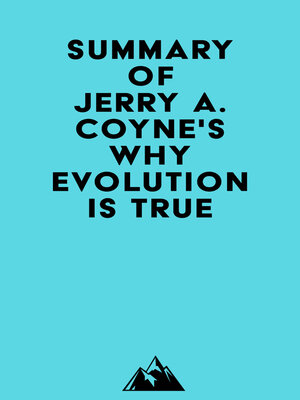
Sign up to save your library
With an OverDrive account, you can save your favorite libraries for at-a-glance information about availability. Find out more about OverDrive accounts.
Find this title in Libby, the library reading app by OverDrive.



Search for a digital library with this title
Title found at these libraries:
| Loading... |
Please note: This is a companion version & not the original book. Sample Book Insights: #1 The argument that nature is the work of a watchmaker, and that all organisms are well-adapted, is both commonsensical and ancient. It was most famously expressed by the eighteenth-century English philosopher William Paley. #2 The modern theory of evolution is easy to understand. It states that life on earth evolved gradually beginning with one primitive species that lived more than 3. 5 billion years ago. The mechanism for most evolutionary change is natural selection. #3 The third part of evolutionary theory is the idea of gradualism. It takes many generations to produce a substantial evolutionary change, such as the evolution of birds from reptiles. #4 The evolutionary tree shown in figure 1 illustrates the relationships between birds and reptiles. When the common ancestor of these two groups split, two populations of a single reptilian species began to evolve slight differences from each other. These differences grew larger over time, and the two populations evolved sufficient genetic difference that they could not interbreed.






